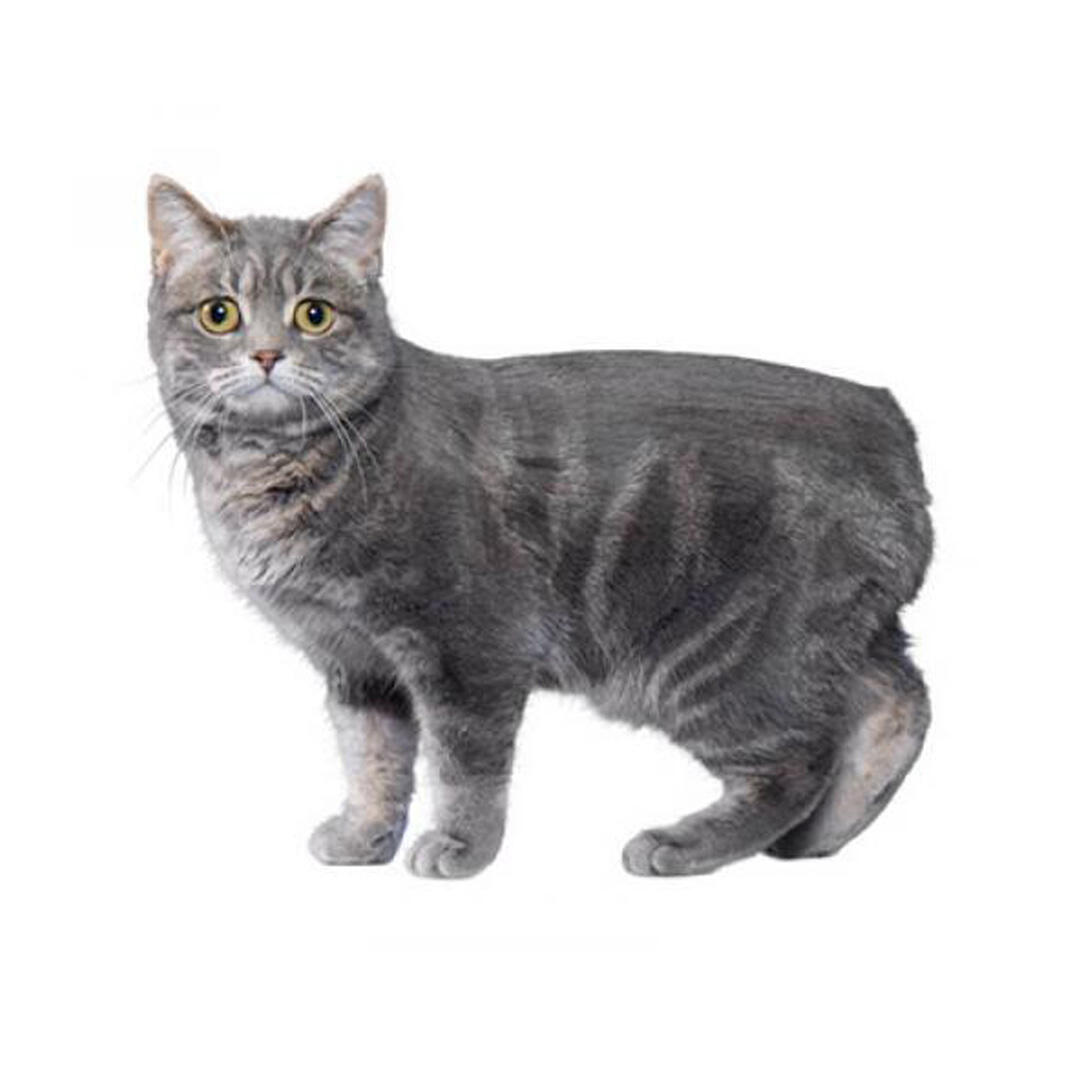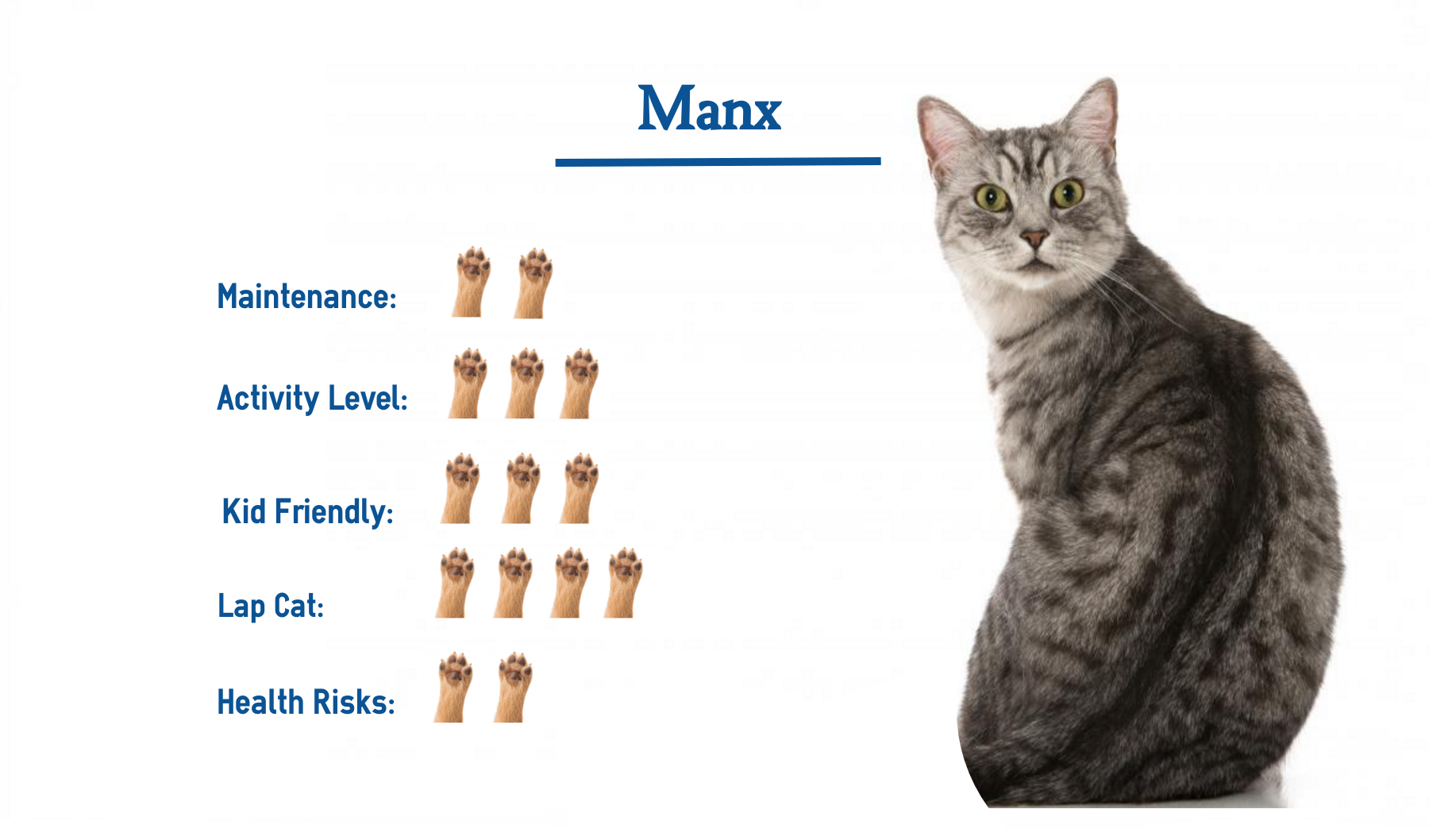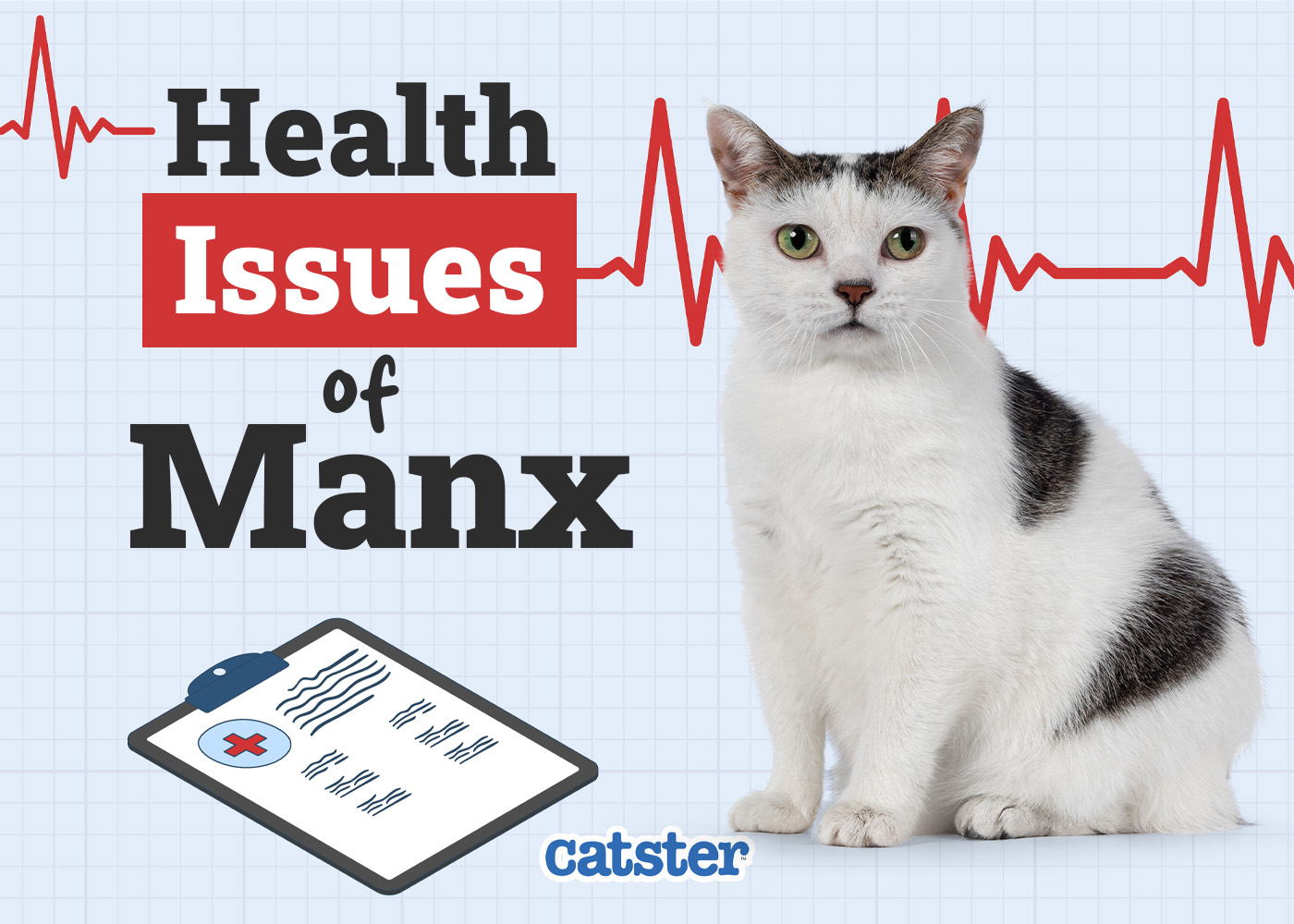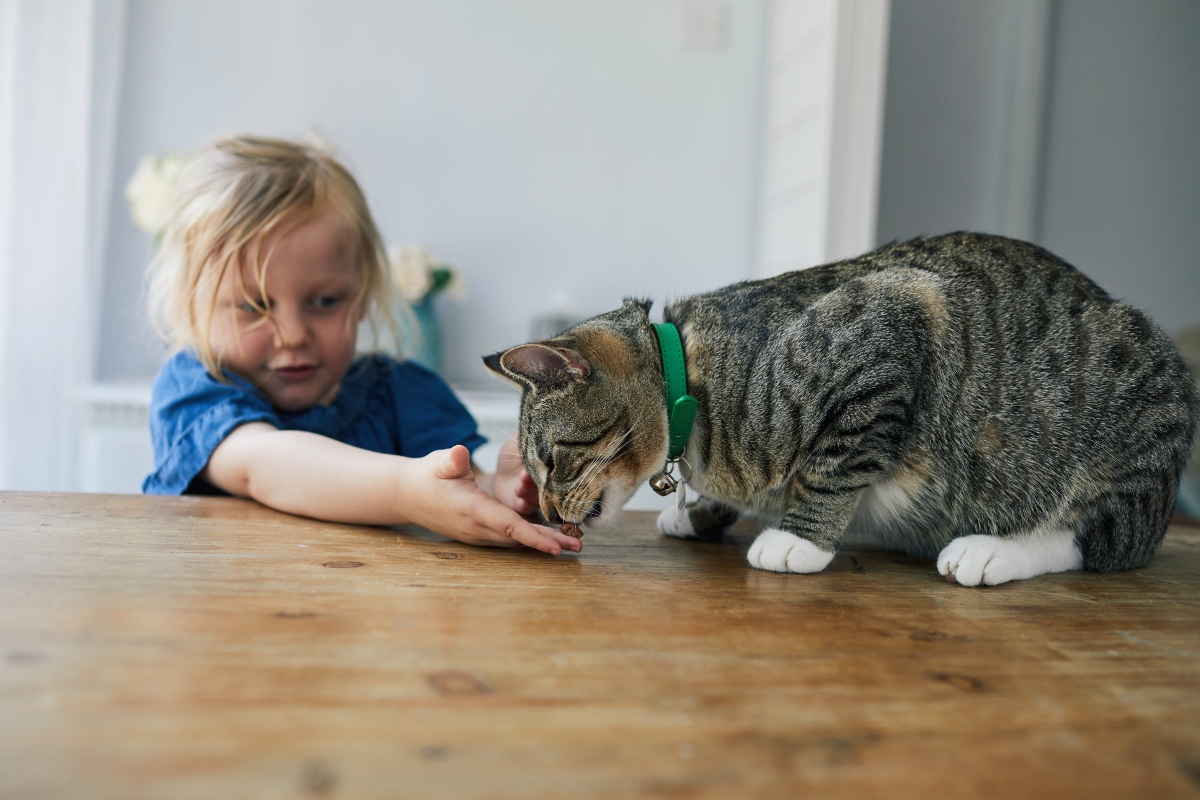Key Takeaways
- Manx cats are known for their unique tailless or short-tailed features, which result from a genetic mutation.
- They are highly social, playful, and adapt well to various household environments, making them excellent companions.
- Adopting a Manx cat can cost between $75 and $150 from shelters, but prices may vary with breeders.
- Long-term care includes regular veterinary check-ups due to potential health issues like sacrocaudal dysgenesis or “Manx Syndrome”.
- Manx cats have distinct physical traits and personalities that set them apart from other breeds.
Why Manx Cats Stand Out
Manx cats are truly one-of-a-kind. These felines are best known for their tailless or short-tailed appearance, a result of a unique genetic mutation. This feature isn’t just for looks; it affects their balance and movement, making them a fascinating study in adaptation.

“Manx Cat Breed Information | Purina UK” from www.purina.co.uk and used with no modifications.
Unique Tail Variations and Their Impacts
The Manx cat’s tail can vary significantly, with some being completely tailless (called “rumpies”), while others may have a small stump or a full-length tail. This diversity in tail length is more than just a quirky trait; it can impact their agility and balance. It’s important for potential adopters to understand these variations because they can influence the cat’s physical abilities and, in some cases, health.
Social and Playful Personality Traits
Besides their striking appearance, Manx cats are celebrated for their social and playful nature. They are known to form strong bonds with their human companions, often following them around the house and engaging in interactive play. This makes them excellent pets for families, as they thrive on attention and companionship.
Adaptability as Household Pets
Manx cats are incredibly adaptable, which makes them suitable for a variety of living situations. Whether you live in a bustling city apartment or a quiet country home, a Manx cat can fit right in. Their easygoing temperament and affectionate nature allow them to get along well with children and other pets.
- They enjoy interactive toys and games that challenge their intelligence.
- Manx cats are often compared to dogs due to their loyalty and trainability.
- They appreciate a mix of playtime and relaxation, making them versatile companions.
Cost of Adopting a Manx Cat
Adopting a Manx cat involves several costs, from initial adoption fees to long-term care expenses. Understanding these costs can help you prepare for the responsibilities of cat ownership.
Initial Adoption Fees
- Shelter adoption fees for Manx cats typically range from $75 to $150.
- Breeders may charge between $300 and $600, depending on pedigree and tail type.
- Adoption events and promotions can sometimes reduce costs.
Initial adoption fees cover basic veterinary care such as vaccinations and spaying or neutering. Always ask the shelter or breeder for a breakdown of what is included in the adoption fee.
It’s crucial to budget for these initial costs to ensure you can provide a safe and healthy environment for your new feline friend. Beyond the initial fees, you’ll also need to consider the costs of essential supplies like food, litter, and toys.

“Manx Cat Breed… Everything You Need to …” from indulgeyourpet.com and used with no modifications.
Long-term Care Costs
Owning a Manx cat means being prepared for ongoing expenses that come with their care. These costs are crucial to maintaining their health and happiness over the years.
Long-term care costs include regular veterinary visits, which are especially important for Manx cats due to potential health issues related to their unique genetic makeup. Additionally, you’ll need to factor in the costs of high-quality cat food, litter, grooming supplies, and other necessities.
- Annual veterinary check-ups: $100-$200
- High-quality cat food: $20-$50 per month
- Litter and supplies: $10-$20 per month
It’s important to plan for these ongoing expenses to ensure that you can provide the best possible care for your Manx cat throughout its life.

“Manx Cat vs American Bobtail Cat: Key …” from www.catster.com and used with no modifications.
Manx Cats vs. Other Breeds
Manx cats are often compared to other breeds due to their distinctive features and personality traits. Understanding how they stack up against other cats can help potential adopters decide if a Manx is the right fit for their home.
Physical Differences with Other Breeds
One of the most obvious differences between Manx cats and other breeds is their tail—or lack thereof. While most cats have long, expressive tails, Manx cats may have a short stump or no tail at all. This difference can affect their movement and balance, giving them a unique gait that distinguishes them from their feline counterparts.
Besides the tail, Manx cats also have elongated hind legs, which give them a rabbit-like hop. This physical trait can be both endearing and intriguing, setting them apart from other breeds.

“Siamese Cat VS. Manx Cat – YouTube” from www.youtube.com and used with no modifications.
Comparison of Temperament
When it comes to temperament, Manx cats are known for their social and playful nature. They often form strong bonds with their owners and enjoy interactive play. This makes them similar to breeds like the Siamese or Burmese, which are also known for their affectionate and social personalities.
However, unlike some breeds that can be aloof or independent, Manx cats thrive on companionship and often follow their owners around the house. This makes them ideal for families or individuals seeking a loyal and engaging pet.
Health and Maintenance Challenges
Manx cats do have some unique health considerations compared to other breeds. Their genetic mutation can lead to sacrocaudal dysgenesis, a condition that affects the spine and can cause health issues. Regular veterinary check-ups are essential to monitor their health and address any concerns early on.
In terms of maintenance, Manx cats are relatively low-maintenance compared to long-haired breeds. Their short coats require minimal grooming, but regular brushing can help keep their fur healthy and reduce shedding.
The Special Characteristics of Manx Cats
Manx cats have a range of special characteristics that make them stand out from other breeds. From their physical traits to their rich history, these cats are truly unique.
Physical Traits Beyond the Tail
In addition to their taillessness, Manx cats have several other physical traits that make them distinctive. Their bodies are compact and muscular, with a rounded head and prominent cheekbones. This gives them a robust and sturdy appearance, which is both attractive and practical for their active lifestyles. If you’re interested in comparing other breeds with unique traits, you might want to explore the Cornish Rex cat known for its cuddly and low-maintenance nature.

“Story of How The Manx Cat Lost Her Tail …” from www.twinkl.co.uk and used with no modifications.
Historic Origins on the Isle of Man
The Manx cat’s origins trace back to the Isle of Man, a small island located between Great Britain and Ireland. The breed’s unique genetic mutation is believed to have developed naturally on the island, where the cats were isolated from other feline populations. This isolation allowed the tailless trait to become more prevalent, leading to the distinct breed we know today.
Variants Within the Manx Breed
Within the Manx breed, there are several variants based on tail length. These include:
- Rumpy: Completely tailless
- Rumpy riser: A small rise of bone where the tail would be
- Stumpy: A short tail stump
- Longy: A full-length tail
Each variant has its own charm and appeal, allowing potential adopters to choose the type that best fits their preferences and lifestyle.
Potential Health Concerns in Manx Cats
While Manx cats are generally healthy, they are predisposed to certain health issues due to their genetic makeup. Understanding these concerns can help you provide the best care for your feline friend. For more information on similar topics, you might want to explore the health issues of Calico cats.
Sacrocaudal dysgenesis often called “Manx Syndrome” is a significant health concern for some of these cats that do not have a long enough tail, especially those that may not have been monitored as a kitten. This condition affects the spine and can lead to problems with bowel and bladder control. It’s essential to work closely with a veterinarian to monitor and manage any health issues that may arise.
Besides sacrocaudal dysgenesis, these cats may also be prone to arthritis and corneal dystrophy. Regular veterinary visits, a balanced diet, and appropriate exercise can help mitigate these risks and ensure a long, healthy life for your Manx cat.
Understanding Manx Syndrome
Sacrocaudal dysgenesis aka “Manx Syndrome” is a genetic condition that can affect some Manx cats due to their unique genetic mutation (research suggests up to 20% can have exhibit some signs, which means on average 80% do not and are as healthy as any other full tail cat). It primarily involves spinal abnormalities, which can lead to a range of health issues, including problems with the bladder, bowels, and sometimes hind limb paralysis. This condition is more prevalent in completely tailless Manx cats, known as “rumpies.”
Early detection and management are crucial for cats with sacrocaudal dysgenesis. Regular veterinary check-ups can help monitor the condition and ensure that any emerging issues are addressed promptly. While there is no cure for sacrocaudal dysgenesis, supportive care and medical interventions can improve the quality of life for affected cats.

“Manx Cat Health Problems: 8 Vet …” from www.catster.com and used with no modifications.
Spinal and Musculoskeletal Issues
Besides sacrocaudal dysgenesis, Manx cats can experience other spinal and musculoskeletal issues. Their unique genetic makeup can sometimes lead to arthritis, especially as they age. This can affect their mobility and overall comfort.
Owners should be vigilant for signs of discomfort or difficulty moving, such as reluctance to jump or climb. Providing a comfortable environment with easy access to favorite resting spots can help alleviate some of these issues. Additionally, maintaining a healthy weight through diet and exercise is crucial to reducing the strain on their joints.
Importance of Regular Veterinary Check-ups
Regular veterinary check-ups are essential for all cats, but especially for Manx cats due to their predisposition to certain health issues. These check-ups allow for early detection of any potential problems, enabling timely intervention and management.
During these visits, the vet can conduct a thorough physical examination and may recommend additional tests, such as X-rays or blood work, to assess the cat’s overall health. Keeping up with vaccinations and parasite prevention is also a vital part of maintaining your Manx cat’s health.
Incorporating routine dental care and monitoring for any changes in behavior or appetite can further contribute to your cat’s well-being. By prioritizing regular veterinary care, you can help ensure that your Manx cat leads a long, healthy, and happy life.
Conclusion: Embracing the Charm of the Manx
Manx cats are truly unique companions with their distinctive appearance and endearing personalities. Their taillessness adds to their charm, while their playful and social nature makes them beloved members of any household. However, potential adopters should be aware of the health considerations associated with this breed.
By understanding the costs, care requirements, and potential health issues, you can provide a loving and supportive home for a Manx cat. Whether you’re drawn to their fascinating history, their engaging personality, or their captivating looks, embracing a Manx cat is sure to bring joy and companionship into your life.
Frequently Asked Questions (FAQ)
Many prospective Manx cat owners have questions about the breed. Here are some common queries and answers to help you make an informed decision about adopting a Manx cat.
Do all Manx cats have no tails?
No, not all Manx cats are completely tailless. There are several tail variations within the breed, ranging from completely tailless (“rumpies”) to cats with full-length tails (“longies”). The presence and length of a tail do not affect the cat’s ability to be a loving and loyal pet. If you’re interested in learning about other unique cat breeds, check out this guide on Cornish Rex cats.
Are Manx cats good for families with children?
Yes, Manx cats are excellent companions for families with children. Their playful and social nature makes them well-suited to family life. They often enjoy interactive play and can form strong bonds with children, making them a delightful addition to any family.

“6 friendly cat breeds for families with …” from www.lovemycatz.com and used with no modifications.
What are the exercise needs of a Manx cat?
Manx cats have moderate exercise needs. They enjoy interactive play and activities that challenge their intelligence. Providing toys, climbing structures, and opportunities for play can help keep them physically and mentally stimulated. Regular play sessions also help maintain a healthy weight and prevent boredom-related behaviors.


